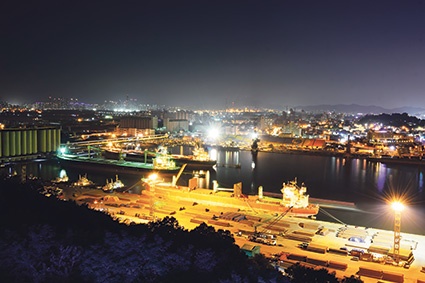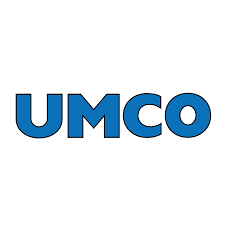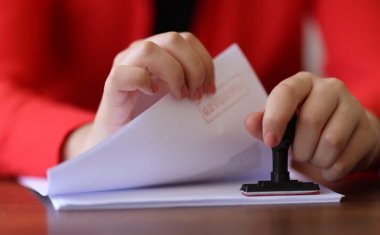The New K-REACh


It is on everyone's lips: Since Jan. 1, K-REACh has been the law in South Korea. With this implementation, the global chemical industry faces a list of new requirements. The good news is that by way of optimized processes, as well as an approach to other existing judicial systems, this new legislation is familiar for European chemical manufacturers. For that reason this system is aptly referred to as K-REACh.
The background for the new provision is the international push to implement more environmental and consumer protection. Little by little, these measures lead to stronger statutory regulation for the import and the handling of chemicals in industrialized countries. The focus is not limited to the chemical industry. Indeed, even importers and distributors of consumer products are subject to reporting to public and government agencies. These reports gather detailed information on products' chemical composition, so an appropriate response can be taken in case of emergencies.
K-REACh
The foundation of K-REACh is based on four principles: reporting, registration, communication along the supply chain, as well as product notification. In order to comply with legal requirements, the appropriate steps must first be ascertained and implemented prior to every import. Just as in the EU, foreign companies may appoint an only representative (OR) for South Korea. The use of an OR is highly recommended in cases in which a foreign company that wishes to import chemicals to South Korea does not have headquarters or branch offices in South Korea. Not only will this ensure that importers comply with all K-REACh requirements, but it will also ease the hurdles that could be faced because of the language barrier. In general, only companies that have a seat in South Korea can implement all four processes.
Reporting And Registration
An important note for the future: Before the first shipment, it must be clear what materials in what amounts are to be imported into South Korea. Here the differentiation is between "new chemicals" - those that must always be reported - and "existing chemicals," which are only subject to the reporting process starting at one ton per year.
Any registration is mandatory for any new or existing chemicals listed on the priority evaluation chemicals (PEC) list. The first PEC list, which was published in October, lists 518 substances that are currently in focus. Information resulting from the registration process must be included in all communications with customers. Specifically this means that the indented use of the registered substances must be included during the sale of mixtures.
Notification Requirement
The sale of consumer products brings about the requirement to test the ingredients for their hazards as well as their potential exposures. For example, products such as cleaning agents or detergents mandate a notification if they contain more than 0.1% hazardous chemicals and they are imported in excess of one ton per year. A substance is considered hazardous if the Ministry of Environment (MoE) has placed it on the list of toxic substances in the Chemical Control Act (CCA) or if the substance is listed on the PEC list.
GHS-Hazard Classes
South Korea has been working on implementation of the UN Globally Harmonized System (GHS) since 2003. South Korea has adopted most of the GHS building blocks, similar to the adoption of the European Union by way of the Classification, Labeling and Packaging (CLP) regulation. Particularly European companies should note the differentiation in the hazard categories flammable gas, aerosols, aspiration hazard and hazard to the ozone layer.
South Korea currently has two agencies responsible for the classification of chemicals and the implementation of GHS. These are the previously mentioned MoE and the Ministry of Labor (MoL), whose Chemical Control Act was the first legal foundation for the classification of chemicals. Similar to the European system of classification according to index number, the CCA has an obligatory classification of 789 chemicals. The C&L inventory of the MoL should be used only in the second step, after the classification has been determined. These classification systems are currently being harmonized, in order to have a uniform scheme for the classification of hazardous chemicals.
Labeling and Safety Data Sheets
The Safety Data Sheet (SDS) in South Korea has been adopted in accordance with GHS and depicts the necessary labeling requirements of chemicals. It is highly recommended to depict the proper label on shipments. Large-scale inspections conducted by Korean regulatory agencies have shown that deficiencies are commonplace. The absence of a Safety Data Sheet at the workplace can carry a fine of up to $500, and incorrect labeling of a container can be fined up to $200 per violation.
Advice For Stakeholders
Any new regulation must first prove its functionality through practical experiences. A big advantage for companies is that similarities with the EU regulation exist and that similar test methods, namely those according to the Organization for Economic Cooperation and Development (OECD), are used for the registration of products in South Korea. As always, it is recommended to seek a business partner that is fluent in Korean, irrespective of if the partner has regional presence or is merely a consultancy. Despite the fact that South Korea is very westernized, it can be invaluable to have a solid command of the Korean language in order to fully understand the conduct and structures of authorities. If applied successfully, these can be the first steps one takes into the Korean market and the avoidance of fines of up to $100,000.






